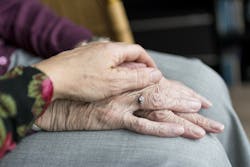Inequality a factor in older COVID-19 patients’ ability to isolate
A new University of Michigan poll, sampling more than 2,000 adults 50-80 years old, suggests that nearly one in five older adults don’t have the ability to isolate themselves from the other people they live with if they test positive for COVID-19 or have symptoms of the disease, according to a news release from the university.
Disparities were revealed: those who are Hispanic or Black, or who have lower incomes or poor health to begin with are more likely to lack a safe isolation place in their home.
The poll also shows significant inequality in another key aspect of staying safe and healthy during the pandemic: the ability to get outside for fresh air and exercise, and to engage safely with friends, neighbors and relatives in open air.
Older adults who had more access to outdoor spaces around their home, and those who could walk to greenspaces – like parks, gardens or woods – were more than twice as likely as those who live in single-family detached homes to say they had no place to isolate.
“Research has proven that COVID-19 can spread easily within homes, so that’s why it’s concerning that 18 percent of people over 50 don’t have a way to do so, and that this rose to 27 percent among those who say they’re in fair or poor health, which may indicate a higher risk of severe COVID-19,” said Preeti Malani, MD, the poll director and a Michigan Medicine physician specializing in geriatrics and infectious diseases.
Nearly a third of Hispanic poll respondents (31 percent) said they did not have a place to isolate in their home, compared with 25 percent of Black respondents and 14 percent of white respondents. People with household incomes under $30,000 were more than twice as likely as those with incomes over $100,000 to say they lack a safe isolation space.

